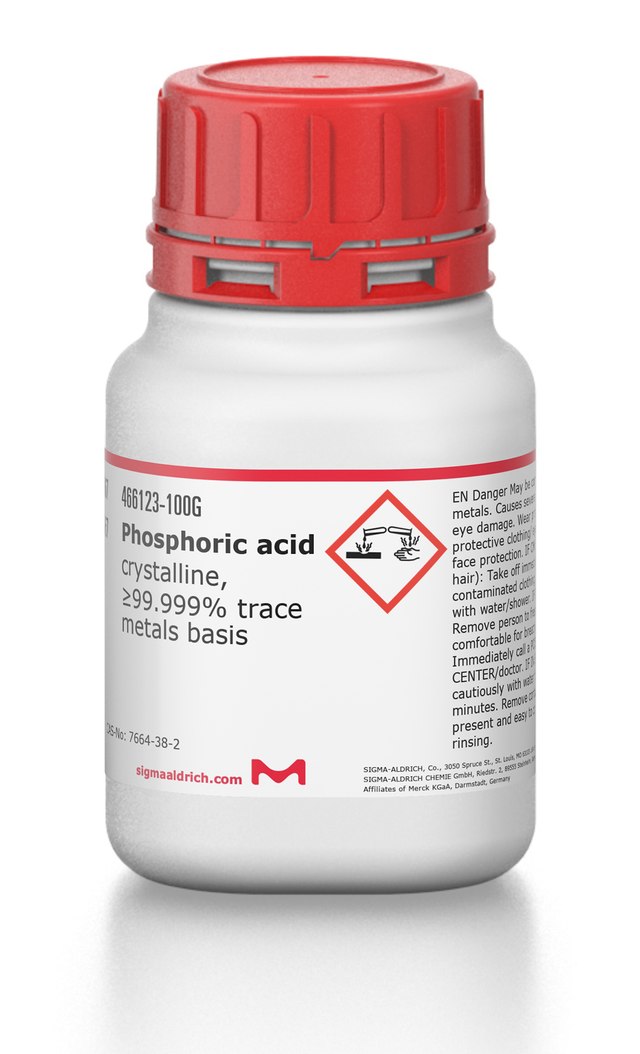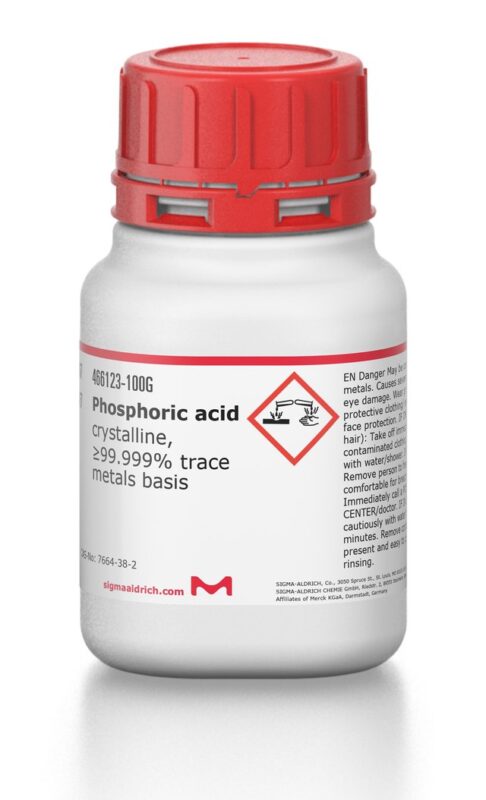Blog
Phosphoric Acid pKa: Understanding Its Role and Importance
Phosphoric acid pKa is a critical concept in chemistry, affecting both industrial applications and biological processes. pKa, the acid dissociation constant, indicates the strength of an acid, and phosphoric acid has multiple pKa values due to its triprotic nature. In this article, we will explore the pKa values of phosphoric acid, their importance, and how they influence chemical reactions.
What is Phosphoric Acid?
Phosphoric acid (H₃PO₄) is a weak acid commonly used in fertilizers, food additives, and cleaning agents. It is a triprotic acid, meaning it can donate three protons (H⁺) in a solution, giving it three pKa values. These pKa values reflect the acid’s ability to dissociate and release protons at different stages.
Phosphoric acid is essential in many industries, particularly agriculture and food processing, due to its ability to control pH levels. Understanding phosphoric acid pKa helps chemists and industry professionals predict how it will behave in various conditions.
Understanding pKa: What Does It Mean?
The term “pKa” stands for the acid dissociation constant. It is a numerical value that indicates the strength of an acid. The lower the pKa value, the stronger the acid, as it dissociates more readily in water. Phosphoric acid pKa values are essential because they provide insights into how this acid will interact with other chemicals, influencing pH levels and reaction rates.
Each pKa value represents a different stage of proton release. Since phosphoric acid can donate three protons, it has three corresponding pKa values that need to be understood to utilize the acid effectively.
Phosphoric Acid pKa Values
Phosphoric acid has three pKa values:
- First pKa: 2.15 – This represents the dissociation of the first proton (H₃PO₄ → H₂PO₄⁻ + H⁺).
- Second pKa: 7.20 – The second pKa corresponds to the loss of the second proton (H₂PO₄⁻ → HPO₄²⁻ + H⁺).
- Third pKa: 12.32 – The third pKa signifies the dissociation of the final proton (HPO₄²⁻ → PO₄³⁻ + H⁺).
These values are essential in predicting the behavior of phosphoric acid in different pH environments.

The Importance of Phosphoric Acid pKa in Chemical Reactions
Phosphoric acid pKa values play a vital role in various chemical reactions. By knowing these values, scientists can predict the acid’s behavior in different pH environments. For example, at a low pH, phosphoric acid will primarily exist in its fully protonated form (H₃PO₄), while at a higher pH, it will predominantly exist as the phosphate ion (PO₄³⁻).
Understanding phosphoric acid pKa is crucial in industries such as:
- Agriculture: Phosphoric acid is a key ingredient in fertilizers, where it helps regulate the soil’s pH and nutrient availability.
- Food Industry: It is used to acidify foods and beverages, ensuring they have the correct pH level for preservation.
- Water Treatment: Phosphoric acid pKa values help in the removal of metal ions and the adjustment of pH in water systems.
Phosphoric Acid pKa and pH Balance
The pH of a solution indicates its acidity or alkalinity. Phosphoric acid pKa values are vital in maintaining the pH balance in various environments, particularly in biological systems. For instance, in the human body, phosphoric acid is part of the buffer system that regulates blood pH.
The buffer system relies on the interplay between different pKa values to maintain a stable pH. Phosphoric acid’s ability to donate and accept protons at various stages makes it a versatile acid in pH regulation.
Applications of Phosphoric Acid in Industry
The wide range of applications for phosphoric acid in industry stems from its unique chemical properties, particularly its pKa values. Below are some key areas where phosphoric acid is used:
1. Fertilizers
Phosphoric acid is a critical component in the production of fertilizers. Its ability to release protons helps plants absorb essential nutrients, promoting growth and yield. The pKa values of phosphoric acid ensure that it can efficiently adjust soil pH to suit various crops.
2. Food and Beverage Industry
In food production, phosphoric acid is used as an acidulant, helping control the pH of foods and beverages. Its pKa values allow it to maintain acidity without overpowering the product, preserving both flavor and shelf life.
3. Cleaning Agents
Due to its mild acidity, phosphoric acid is frequently used in cleaning products, particularly for removing rust and mineral deposits. Its pKa values help ensure it is effective in different environments, from household cleaners to industrial-grade solutions.
4. Water Treatment
Phosphoric acid plays a role in water treatment, where it is used to adjust the pH of water systems and remove heavy metals. Its multiple pKa values enable it to perform efficiently under different conditions, making it a versatile acid for this application.
Why Phosphoric Acid pKa Matters in Everyday Life
While phosphoric acid pKa may seem like a technical concept, it has practical implications for everyday life. From the food we eat to the water we drink, phosphoric acid plays a role in ensuring safety and quality. Its pKa values allow it to be used across different industries, making it a valuable chemical for various applications.
Understanding phosphoric acid pKa can help you make informed decisions about its use in both professional and personal contexts. Whether you’re working in agriculture, food processing, or chemical manufacturing, the pKa values of phosphoric acid are essential for optimizing processes and achieving the desired results.


Pingback: What is the pKa of H3PO4? Explore Its Role in Acid-Base Reactions - Lablink Solutions